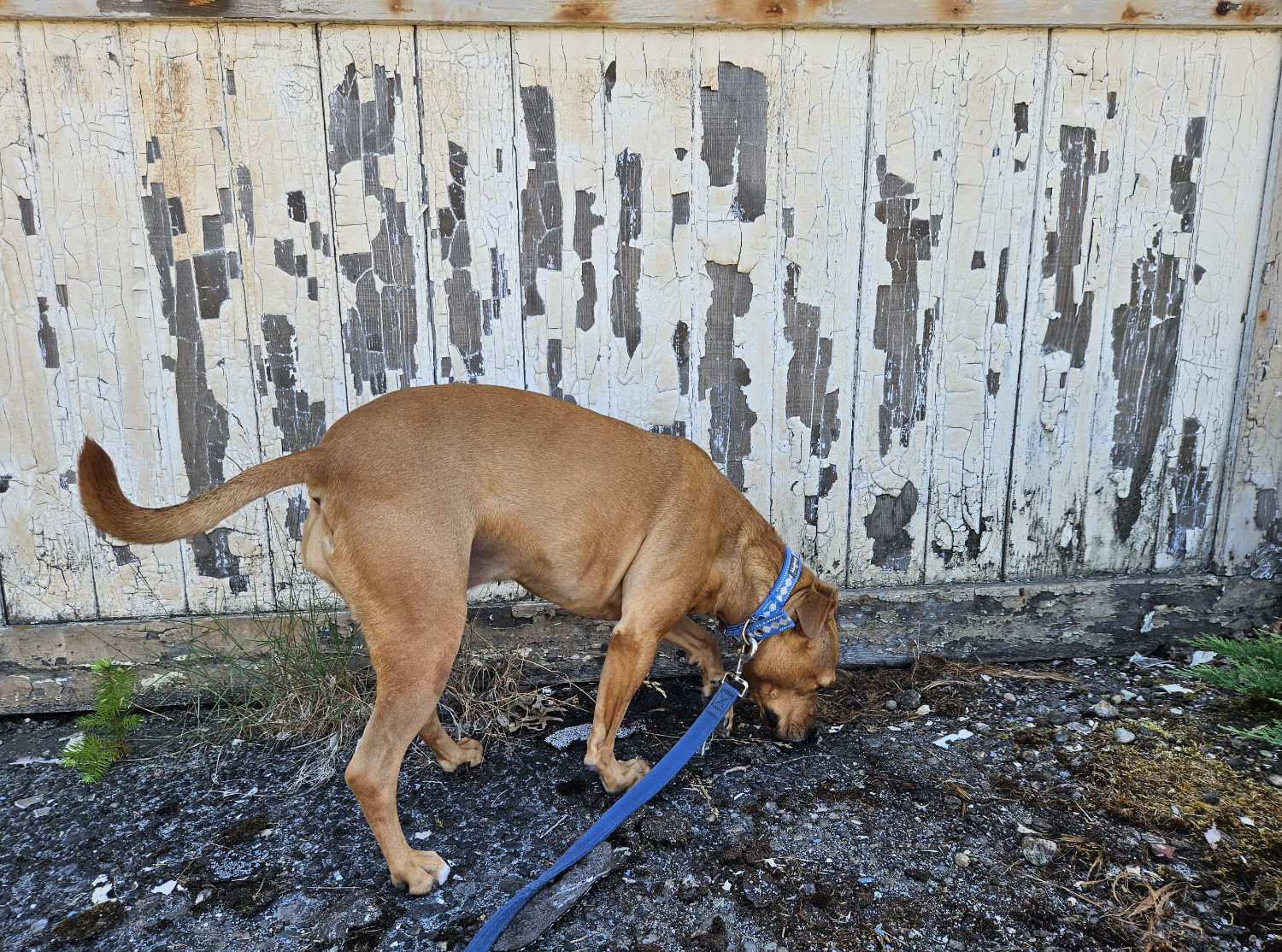The War At Home

Barley, a dog, sniffs about along the base of a weather-scarred wooden wall, its paint flaking off in large chunks after years of neglect.
There’s an aesthetic conceit that is often explored in photography, that humanity’s creations are doomed to wither and decay, allowing nature, indefatigable, to reclaim its rightful place. It’s hard not to dwell on entropy when Barley pauses in front of some shed or garage that’s been deemed a sacrifice by its owner. In this instance, I can surmise that this garage is both too small for modern cars and too difficult to access, making its upkeep pointless. The truth is, of course, that we, and nature, are not special in entropy’s eyes. That which is neglected will decay, and it is only by a laborious uphill battle that anything is maintained. Nature merely seems robust because it is a fully decentralized effort, wherein each individual arc of creation and destruction is subsumed by the roiling wave of all those around it. Humanity’s works feel fragile because their upkeep is someone’s job, and too often, someone else’s job.
So keep making. Keep building. Chip in. Bring in a load from the car. Don’t wait for someone else to fix it. You don’t need to give everything you’ve got if we’re all, as a wave, doing what we can.